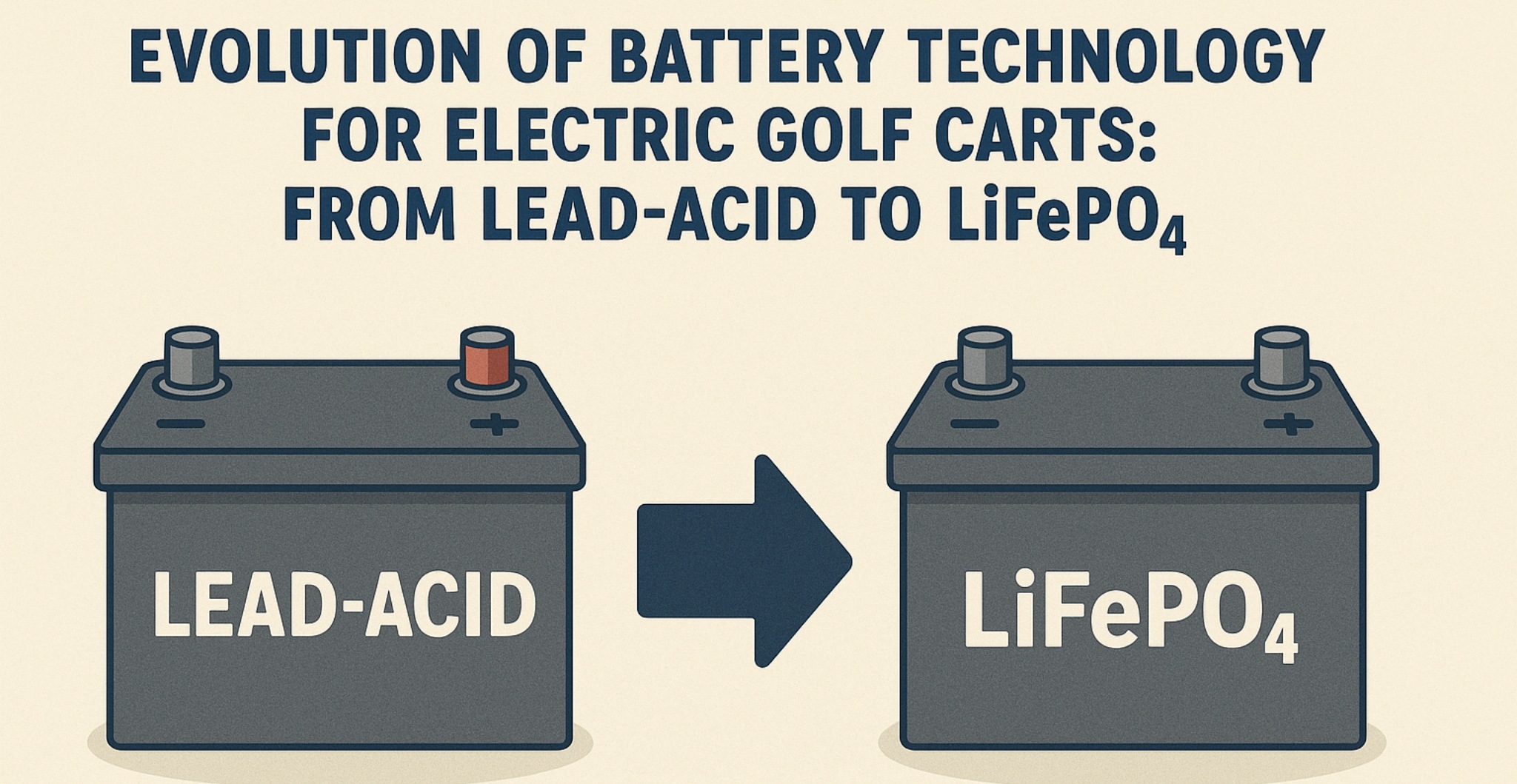With the popularization of green travel and sustainable development concepts, electric golf carts have become an important supporting facility for golf courses around the world. As the “heart” of the whole vehicle, the battery directly determines the endurance, performance and safety. From the initial lead-acid battery to the current mainstream lithium iron phosphate (LiFePO4) battery, the technological evolution has significantly improved the use experience and operational efficiency of the golf cart. This article will focus on the advantages of LiFePO4 compared to traditional lead-acid batteries in terms of safety, cycle life, energy density, temperature adaptability and charging speed.
Limitations of lead-acid batteries
Lead-acid batteries were once widely used in golf carts due to their low cost and mature technology. However, they also have many bottlenecks: they are heavy and occupy a lot of space, resulting in a decrease in the control experience of the whole vehicle; they have high maintenance requirements and need to be regularly supplemented with distilled water, otherwise they are prone to sulfation and shorten their life. In addition, the cycle life of lead-acid batteries is usually around 300-500 times, and frequent replacement increases the long-term use cost.
Advantages of LiFePO4 Batteries
Safety
LiFePO4 batteries have extremely high thermal and chemical stability, are not prone to thermal runaway or combustion, and are environmentally friendly and non-toxic. Under abnormal conditions such as high temperature or short circuit, the safety margin of LiFePO4 far exceeds that of other lithium battery systems, and can provide more reliable use guarantees for golf carts.
Cycle Life
The cycle life of LiFePO4 batteries is much higher than that of lead-acid batteries. Generally, it is more than 2,000 times, and high-quality products can even reach 3,000-5,000 times, which means that it can be used continuously for 5-10 years under the condition of deep discharge once a day. In contrast, the capacity of lead-acid batteries will decay to less than 80% of the original capacity after 500 cycles, requiring more frequent replacement, and significantly increasing maintenance costs and downtime losses.
Energy Density
Energy density is an important indicator of battery technology. At the same capacity, the weight of LiFePO4 battery is only about 1/3 of that of lead-acid battery, and the volume is about 1/2, which greatly reduces the vehicle’s own weight and improves the driving range and vehicle load capacity. In addition, the higher discharge depth (DoD can reach 80-100%) makes the effective energy utilization rate higher, while the optimal DoD of lead-acid battery is only about 50%, wasting a lot of potential power.
Temperature Adaptability
In low temperature environment, the performance of lead-acid battery drops sharply, and the capacity loss can reach more than 50%; while LiFePO4 battery can still maintain more than 80% of capacity and voltage output at -10°C, and the minimum allowable operating temperature can reach -20°C, which is more stable in the winter or cold morning stadium environment.
Fast Charging Capability
LiFePO4 battery supports higher charging rate (up to 0.5C or even 1C), which greatly shortens the charging waiting time and improves the vehicle turnover efficiency. In contrast, the recommended charging rate of lead-acid batteries is only 0.1C–0.2C, and it often takes 6–8 hours to fully charge, which is difficult to meet the needs of high-frequency operations.
Comprehensive Cost and Value
Although the initial investment of LiFePO4 batteries is 30–50% higher than that of lead-acid batteries, due to its excellent life and low maintenance characteristics, the net cost can be kept the same or even lower within 5 years. In the long run, LiFePO4 reduces the frequency of replacement and maintenance hours, and the total cost of ownership (TCO) brought by it is more competitive than that of lead-acid batteries.
Conclusion
From safety, cycle life, energy density, temperature adaptability to fast charging, LiFePO4 batteries have shown comprehensive advantages in golf cart applications. With the continuous optimization of technology and large-scale production, the cost of LiFePO4 batteries will continue to decline. In the future, it is expected to become the standard power source for electric golf carts and even the wider LSV (low-speed vehicle) field, helping golf course operations to be more efficient, green and sustainable.
Post time: May-08-2025







